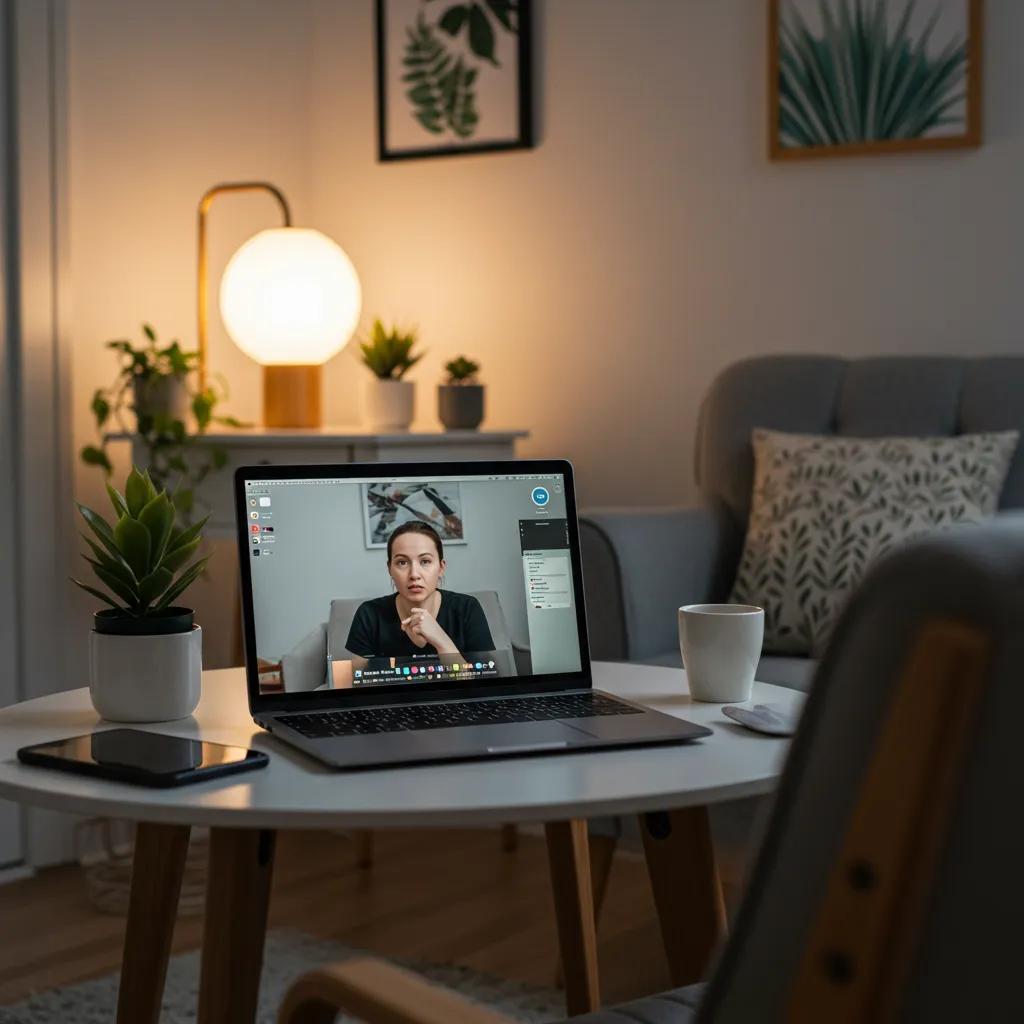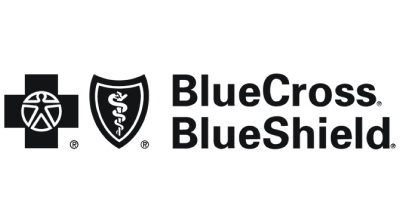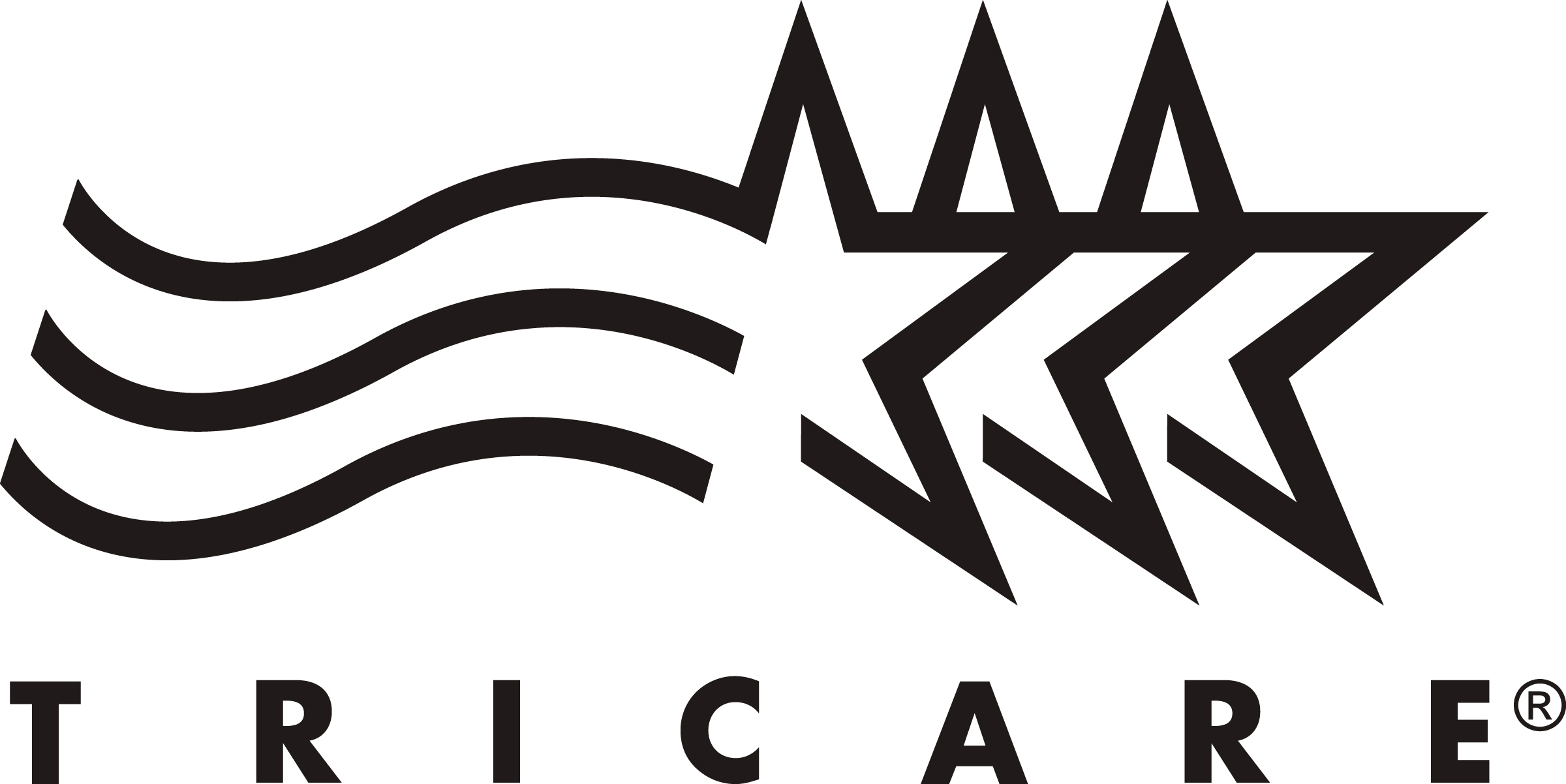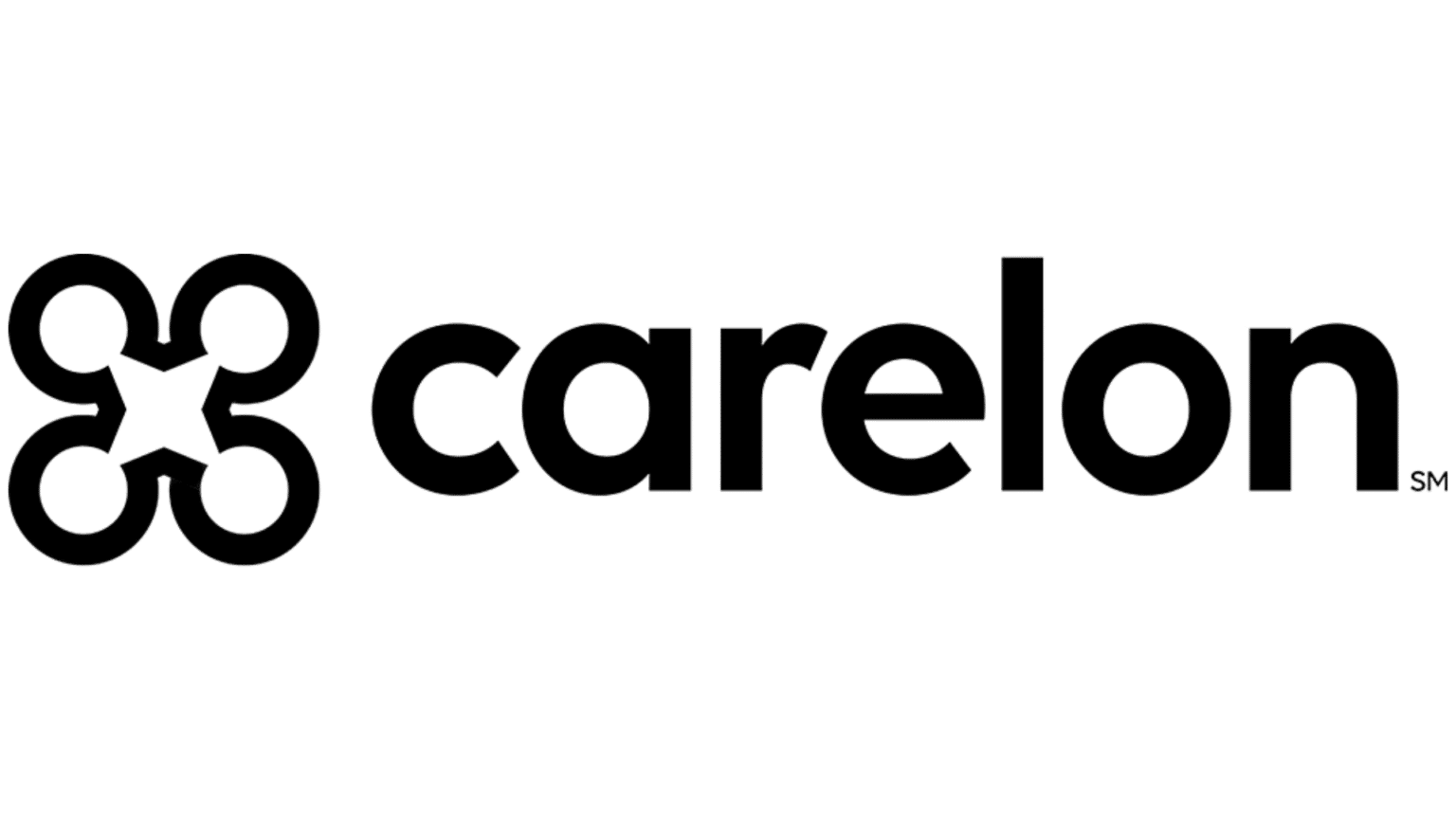Understanding Virtual Rehab
Virtual rehab, also known as online addiction treatment or telehealth recovery, represents a significant advancement in how substance use disorders and co-occurring mental health conditions are treated. At its core, virtual rehab delivers evidence-based therapeutic interventions, counseling, and support services through secure online platforms. Unlike traditional inpatient programs where you live at a facility 24/7, virtual rehab allows you to receive intensive treatment while remaining in your own home or a safe, sober living environment. This model is particularly beneficial for those who have stable housing and a relatively safe home life, enabling them to apply recovery principles in real-time within their daily routines.
The benefits of virtual rehab are numerous and compelling. Foremost among them is accessibility. It removes geographical barriers, making high-quality care available to individuals who might live far from treatment centers or have mobility issues. For residents in Orange County or across California, this means access to specialized care without the need to travel or relocate. Cost-effectiveness is another major advantage; virtual programs often have lower overheads than residential facilities, potentially making treatment more affordable. Furthermore, the flexibility offered by virtual rehab is a key draw. Programs are often structured to accommodate work, school, or family responsibilities, allowing individuals to receive treatment without putting their lives entirely on hold. This continuity can be crucial for maintaining employment, strengthening family bonds, and practicing coping skills in real-world situations.
Compassion Recovery Center is at the forefront of providing comprehensive
virtual IOP and other remote addiction treatment services. Our programs are specifically designed to deliver the intensity and structure of traditional care within a flexible online format. Let’s delve into some of the core services offered:
– Remote Intensive Outpatient Program (IOP): Our
Virtual IOP Program is a cornerstone of our virtual offerings. It provides a structured schedule of group and individual therapy sessions several days a week. While less intensive than Partial Hospitalization Programs (PHP), IOP offers significant support and therapeutic intervention for individuals transitioning from higher levels of care or those who require more than standard outpatient treatment but don’t need 24/7 supervision. In a virtual setting, this means participating in live video sessions with therapists and peer groups from the comfort of your home. The curriculum covers essential recovery topics like relapse prevention, coping mechanisms, triggers, communication skills, and building healthy habits. Our
Virtual IOP Program provides the accountability and therapeutic depth needed to build a strong foundation for long-term sobriety.
– Online CBT Therapy: Cognitive Behavioral Therapy (CBT) is a highly effective, evidence-based therapy used in addiction treatment. It helps individuals identify and change negative thought patterns and behaviors that contribute to substance use. In our virtual program, you’ll engage in online CBT therapy sessions with licensed therapists. These sessions occur via secure video conferencing, allowing you to explore your thoughts and feelings in a private, confidential setting. CBT in a virtual format is just as impactful as in-person sessions, providing you with practical tools and strategies to manage cravings, cope with stress, and challenge irrational beliefs.
– MAT Treatment Online: Medication-Assisted Treatment (MAT) combines behavioral therapies and medications to treat substance use disorders, particularly opioid and alcohol dependence. MAT is a cornerstone of modern, effective addiction treatment. Recognizing the importance of integrated care, Compassion Recovery Center offers MAT treatment online where appropriate and clinically indicated. This involves virtual consultations with medical professionals who can prescribe and monitor medications like buprenorphine or naltrexone. These virtual medical appointments are seamlessly integrated with your therapy schedule, ensuring a holistic approach to recovery that addresses both the physical and psychological aspects of addiction.
– Virtual Couples Counseling Rehab: Addiction impacts not just the individual but their relationships. For those in partnerships, healing together can be a powerful part of the recovery process. Our virtual couples counseling rehab services allow partners to attend therapy sessions together remotely. A therapist facilitates these sessions via video conferencing, helping couples address relationship dynamics affected by addiction, improve communication, rebuild trust, and establish a supportive home environment conducive to sobriety. This service acknowledges the crucial role that relationships play in recovery and provides a safe space for partners to heal alongside the individual in treatment.
Compassion Recovery Center specializes in providing these telehealth addiction treatment services, bringing expert care to residents across California, with a strong focus on
Orange County IOP and virtual rehab solutions. We understand the unique challenges and opportunities presented by remote treatment and have designed our programs to maximize effectiveness and engagement. Choosing virtual rehab means choosing a path that fits into your life, allowing you to build recovery skills within your real-world environment. However, to truly benefit from this flexible approach, setting up your home environment thoughtfully is essential. If you have questions about how these virtual services can meet your specific needs, we encourage you to
contact us.
Preparing Your Home for Virtual Rehab
Your home environment becomes your treatment center when you enroll in virtual rehab. This means its setup can significantly impact your focus, privacy, and overall engagement with the program. Preparing your space is a fundamental step in setting yourself up for success in remote drug rehab in California or any telehealth addiction treatment program. It’s not just about finding a quiet corner; it’s about intentionally creating a dedicated space that supports your recovery journey.
The first critical step is choosing the right space. Look for a location in your home that is quiet, private, and comfortable. This is where you will attend therapy sessions, participate in group discussions, and potentially work on assignments or engage in self-care activities related to your recovery.
– Quiet: Minimize background noise. This means avoiding high-traffic areas of the house, rooms next to noisy appliances, or spaces where others frequently congregate. External noise can be distracting during therapy sessions and make it difficult to hear and be heard. If complete silence isn’t possible, consider ways to dampen sound, such as closing doors and windows, or using headphones (more on that later).
– Private: Confidentiality is paramount in addiction treatment. Choose a space where you can speak freely without being overheard by family members, roommates, or neighbors. This might be a bedroom, a home office, or even a quiet corner of a living room that can be sectioned off during session times. Communicate with others in your household about your treatment schedule and the need for privacy during those times. Setting clear boundaries is crucial for ensuring a safe and confidential therapeutic environment.
– Comfortable: You’ll be spending a significant amount of time in this space during your virtual rehab program. Ensure it’s a place where you feel at ease. This includes having a comfortable chair, good lighting (natural light is often best, if possible), and a stable surface for your computer or device. While comfort is important, try to avoid spaces that are too comfortable, like a bed, as this can make it harder to stay focused and engaged during sessions. A dedicated desk or table is ideal.
Once you’ve chosen your space, ensuring you have reliable internet and necessary technology is the next vital component. Virtual rehab is delivered online, so a stable and sufficiently fast internet connection is non-negotiable. Test your internet speed beforehand to ensure it can support video conferencing. If your connection is unstable, consider upgrading your plan or troubleshooting issues before starting the program. Having a backup plan, such as knowing the location of a nearby public library with reliable Wi-Fi or having a mobile hotspot as a contingency, can also be helpful, though using public spaces might compromise privacy.
The necessary technology typically includes a computer (laptop or desktop), a webcam, and headphones.
– Computer: A laptop or desktop computer is generally recommended over a tablet or smartphone for virtual rehab. A larger screen makes it easier to see group participants and shared materials, and a stable setup allows for better posture and less distraction. Ensure your computer is relatively modern and capable of running video conferencing software smoothly.
– Webcam: While many laptops have built-in webcams, ensuring yours is working correctly and provides a clear image is important. Eye contact and facial expressions are key parts of therapeutic communication, even online. Position your webcam at eye level if possible.
– Headphones: Headphones are essential for privacy and minimizing distractions. They allow you to hear your therapist and group members clearly and ensure that sensitive information discussed during sessions isn’t overheard by others in your home. Headphones with a built-in microphone are ideal, or you may need a separate microphone if your computer’s is poor. Test your audio setup thoroughly before your first session.
Setting up a distraction-free environment goes hand-in-hand with choosing a private and quiet space. This involves proactive steps to minimize interruptions during scheduled program hours.
– Inform Your Household: Clearly communicate your virtual rehab schedule to family members or roommates. Explain that these sessions are important and require your full attention and privacy. Ask them to avoid interrupting you during these times unless it’s an emergency.
– Silence Devices: Put your smartphone on silent or turn off notifications on your computer during sessions. Social media alerts, texts, and emails can pull your focus away from the therapeutic process.
– Clear Your Space: Keep your immediate surroundings tidy. A cluttered space can be distracting. Have all your necessary materials (notebooks, pens, water bottle) within easy reach so you don’t need to get up during a session.
– Minimize Visual Distractions: Position your camera so that your background is neutral and uncluttered. Avoid sitting in front of windows or busy areas of your home that could draw your eye or distract others in your session.
Creating this dedicated, prepared space is a powerful act of commitment to your recovery. It signals to yourself and others that this treatment is a priority. By taking the time to ensure your space is quiet, private, comfortable, technologically equipped, and free from distractions, you are laying a solid foundation for engaging fully in your virtual IOP, online CBT therapy, or any other aspect of your telehealth addiction treatment with Compassion Recovery Center. If you’re unsure about the technology requirements or how to best set up your space, our team can provide guidance. Taking these practical steps is an investment in your success. We understand that preparing your environment is a crucial step, and we are here to support you through it. To discuss the practicalities or learn more about starting your virtual program,
contact us.
What to Gather for Virtual Rehab (Your Home Essentials List)
Thinking about virtual rehab often brings to mind preparing your physical space and technology, but just like preparing for any significant endeavor, having the right personal items and tools readily available is crucial. Instead of “packing a bag” for a residential stay, you’re gathering your essentials and organizing your environment at home to support your treatment. This “virtual rehab packing list” focuses on items that will enhance your comfort, focus, and emotional well-being throughout the program.
Let’s break down the essential items you’ll want to have easily accessible in or near your dedicated virtual rehab space:
– Comfortable Clothing: While you’re at home, dressing appropriately for sessions can impact your mindset. However, comfort is key. Choose clothing that allows you to sit for extended periods without feeling restricted. Think comfortable loungewear, soft fabrics, and layers that allow you to adjust to the temperature in your space. Avoid pajamas if they make you feel less alert or professional. The goal is to feel comfortable and relaxed, yet alert and ready to engage.
– Notebooks and Writing Materials: This is perhaps one of the most important items on your list. Therapy involves processing information, exploring thoughts, and learning new skills. Having notebooks and pens (or pencils) readily available allows you to:
– Take notes during group and individual sessions.
– Jot down insights, questions, or thoughts that arise.
– Complete assignments or exercises given by your therapist.
– Use them for journaling, which is a powerful tool for self-reflection and processing emotions.
– Keep track of your schedule, goals, and progress.
Consider having different notebooks for different purposes if that helps you stay organized – perhaps one for therapy notes, one for journaling, and one for program schedules/assignments. Having your writing materials easily accessible prevents you from having to leave your session space to find them.
– Personal Care Items: Maintaining your personal hygiene and well-being is an integral part of recovery. While you’re at home, ensure you have your necessary toiletries and any prescribed medications or supplements readily available.
– Toiletries: Though you won’t be packing a toiletry bag like for travel, establishing a daily routine that includes showering, brushing teeth, and other personal grooming can significantly impact your mood and readiness for the day’s sessions. Ensure you have a supply of your preferred items.
– Medications: If you are taking any prescribed medications, whether for addiction treatment (like in MAT treatment online) or for co-occurring mental or physical health conditions, ensure you have a sufficient supply and take them as directed. Keep them somewhere accessible but secure. Discuss any medication needs or concerns with your medical provider at Compassion Recovery Center.
– Supplements: If you take vitamins or supplements as part of your health regimen, keep them on hand. Hydration is also crucial, so having a water bottle nearby is highly recommended. Consider healthy snacks as well to keep your energy levels stable throughout the day’s program activities.
– Emotional Support Items: Recovery is an emotional journey, and having items that provide comfort, inspiration, or a creative outlet can be incredibly helpful.
– Books: This could include recovery-related literature (like the Big Book or other self-help books), inspiring novels, or books that simply help you relax during downtime. Reading can be a healthy escape and a source of knowledge or comfort.
– Journals: Separate from therapy notebooks, a dedicated journal for free-writing about your feelings, experiences, and reflections can be a powerful therapeutic tool. Explore different types of journals or prompts if helpful.
– Personal Mementos: Photos of loved ones, small comfort objects, inspirational quotes, or items that remind you of your reasons for recovery can be placed in or near your virtual rehab space. These can provide a sense of connection, motivation, and emotional grounding, especially during challenging moments.
– Stress Relief Items: A stress ball, fidget toy, or even just paper and pens for doodling can help manage anxiety or restlessness during sessions or downtime.
Gathering these items isn’t just about convenience; it’s about intentionally equipping yourself for the mental and emotional work of recovery within your home environment. It creates a sense of preparedness and dedication. When you have your notebook ready, your water bottle filled, and your comfort items nearby, you are signaling to yourself that you are serious about this process and ready to engage fully. This thoughtful preparation complements the structured support you’ll receive from your
Virtual IOP Program and other services at Compassion Recovery Center. Taking the time to organize these essentials before your program begins will help reduce potential stressors and allow you to focus entirely on your healing. If you’re ready to start preparing and want to learn more about joining our virtual rehab program, please
verify your insurance online or
contact us.
Creating a Supportive Routine
One of the significant advantages of virtual rehab is the ability to integrate treatment into your daily life. However, this flexibility also requires discipline to create and maintain a supportive routine. Without the structure of a residential facility, you are responsible for structuring your own time outside of scheduled sessions. Establishing a daily routine is not just about managing your schedule; it’s about building healthy habits, creating predictability, and providing a framework for your recovery that helps prevent relapse.
A supportive routine for virtual rehab should encompass more than just attending your therapy sessions. It should be a holistic schedule that includes time for self-care, personal growth, connection, and necessary life responsibilities.
– Establishing a Daily Schedule: Start by blocking out the times for your virtual rehab sessions, whether it’s our
Virtual IOP Program, individual online CBT therapy, or virtual couples counseling rehab. Treat these sessions as non-negotiable appointments. Around these core times, build the rest of your day.
– Wake-up and Bedtime: Maintain a consistent sleep schedule. Sufficient rest is crucial for physical and mental health in recovery. Try to wake up and go to bed around the same time each day, even on weekends.
– Meal Times: Plan regular, nutritious meals. Addiction often disrupts healthy eating habits. Structuring meal times provides stability and ensures your body is fueled properly.
– Therapy and Homework: Allocate dedicated time slots for attending virtual sessions and completing any assignments or journaling exercises given by your therapist. Treat this like dedicated work or school time.
– Self-Care and Relaxation: Schedule time for activities that nurture your well-being and help you relax. This could include reading, listening to music, practicing mindfulness, taking a bath, or engaging in a hobby.
– Physical Activity: Incorporate movement into your day. This could be a structured workout, a walk outside, yoga, or stretching. Physical activity is a powerful tool for managing stress, improving mood, and boosting overall health.
– Incorporating Physical Activity and Healthy Eating: These aren’t just add-ons; they are foundational elements of recovery.
– Physical Activity: Regular exercise releases endorphins, reduces anxiety and depression, improves sleep, and increases energy levels. It also provides a healthy way to cope with cravings and stress. Find activities you enjoy, whether it’s following an online workout video, going for a walk in your neighborhood, or doing some simple stretching at home. Even 15-30 minutes of movement daily can make a significant difference.
– Healthy Eating: Nourishing your body supports brain function and overall health, which are vital for emotional regulation and resilience in recovery. Focus on balanced meals with plenty of fruits, vegetables, lean protein, and whole grains. Limit processed foods, excessive sugar, and caffeine, which can impact mood and anxiety levels. Planning meals can help you make healthier choices consistently.
– Engaging with Support Networks: While virtual rehab provides clinical support, connecting with your personal support network is equally important. This might look different in a remote setting, but it is still vital.
– Family and Friends: If you have supportive family members or friends, schedule regular check-ins with them. This could be phone calls, video chats, or (if safe and appropriate) in-person visits that do not compromise your sobriety. Let them know your treatment schedule and how they can best support you. For couples, utilizing
virtual couples counseling rehab can strengthen the relationship as a recovery support.
– Online Support Groups: Supplement your clinical program with participation in online support groups like AA (Alcoholics Anonymous), NA (Narcotics Anonymous), or SMART Recovery. There are countless virtual meetings available at all hours. These groups provide peer support, shared experiences, and a sense of community that is invaluable in recovery.
– Connecting with Peers in the Program: While virtual, you will be part of a group with other individuals in recovery. Connect with your peers outside of structured sessions if the program allows. Building sober connections is a key part of long-term recovery.
Creating and sticking to a supportive routine provides structure and predictability, which can be incredibly grounding during the often unpredictable emotional landscape of early recovery. It builds healthy habits that are sustainable long after your program ends. It requires intention and effort, but the benefits for your mental, physical, and emotional well-being are immense. Compassion Recovery Center’s programs, including our
Virtual IOP Program, are designed to provide structure, but your daily routine around these sessions is where you apply the principles learned and build a recovery-focused life. If you need help structuring your day or integrating recovery practices, discuss it with your therapist. We are committed to supporting you in building a sustainable routine for recovery in your own environment. To learn more about our structured virtual programs available in Orange County and throughout California, please
reach out today.
Leveraging Technology for Success
In virtual rehab, technology isn’t just the delivery method for treatment; it’s a powerful tool you can leverage to enhance your recovery journey in numerous ways. Beyond simply logging into your therapy sessions, understanding and utilizing various digital resources can significantly support your growth, accountability, and overall well-being. For remote drug rehab in California, telehealth addiction treatment means embracing the digital landscape as part of your healing process.
The primary use of technology will be utilizing telehealth platforms for your therapy sessions. Compassion Recovery Center uses secure, confidential platforms designed specifically for healthcare delivery. Before your program starts, familiarize yourself with the platform your program uses.
– Testing the Platform: Ensure you can log in, access scheduled sessions, and use features like chat, screen sharing (if used by your therapist), and audio/video controls. Test your microphone and webcam within the platform settings.
– Troubleshooting: Know who to contact within Compassion Recovery Center if you encounter technical issues. Having a quick resolution plan minimizes disruption to your treatment schedule.
– Platform Etiquette: While seemingly minor, understanding virtual meeting etiquette (muting yourself when not speaking, using the chat function appropriately, minimizing background noise) can enhance the experience for everyone in group sessions.
Beyond the core treatment delivery, a wealth of apps and online resources are available that can complement your virtual rehab program. These tools can help you practice skills learned in therapy, stay connected to recovery principles, and support your overall health.
– Mindfulness and Meditation Apps: Apps like Calm, Headspace, or Insight Timer offer guided meditations, breathing exercises, and mindfulness practices. These techniques, often taught in online CBT therapy or group sessions, are incredibly effective for reducing stress, managing cravings, and increasing self-awareness. Incorporating a short daily meditation practice using an app can be a powerful addition to your routine.
– Recovery Tracking Apps: Numerous apps are designed specifically for addiction recovery. These can help you:
– Track your sobriety date and milestones.
– Log your daily mood and triggers.
– Connect with a sober community forum.
– Access recovery readings or affirmations.
– Find nearby (or virtual) support group meetings.
Apps like I Am Sober, Nomo, or Twelve Steps AA Companion can provide daily reminders, motivation, and a tangible record of your progress.
– Journaling Apps: If you prefer digital over pen and paper, journaling apps allow you to record your thoughts and feelings securely. Some apps offer prompts or features to track themes and patterns over time, which can be useful for discussing in therapy.
– Health and Wellness Apps: To support physical well-being, consider apps for:
– Fitness: Tracking steps, logging workouts, or accessing guided exercise routines.
– Nutrition: Planning meals, tracking food intake, or finding healthy recipes.
– Sleep Tracking: Monitoring sleep patterns to identify areas for improvement.
– Online Support Group Platforms: As mentioned earlier, platforms like Zoom host countless virtual AA/NA meetings, SMART Recovery meetings, and other specialized support groups. These are easily accessible and provide a vital layer of peer support that complements clinical treatment.
It’s important to use technology mindfully in recovery. Avoid using technology that becomes a trigger or a source of distraction that pulls you away from your goals. For some, excessive social media use can be problematic, and if this is a concern, discussing it with your therapist or exploring resources like
social media addiction treatment might be relevant. The goal is to make technology work for your recovery, not against it.
Leveraging technology effectively requires intentionality. It means exploring the available resources, finding what works best for you, and integrating these tools into your daily routine. Compassion Recovery Center provides the core telehealth addiction treatment, but your proactive use of supportive technology outside of sessions can significantly deepen your engagement with recovery principles and strengthen your coping skills. Discuss with your therapist which apps or online resources they recommend based on your specific needs and goals. By mastering the technology aspects of virtual rehab, you are not just attending sessions; you are actively building a technologically supported recovery lifestyle. To learn more about how technology facilitates our
Virtual IOP Program and other services, feel free to
contact us.
Integrating Compassion Recovery Center Services into Your Home-Based Recovery
When you choose virtual rehab with Compassion Recovery Center, you’re not just signing up for online meetings; you’re integrating a comprehensive suite of professional addiction treatment services directly into your life and home environment. Understanding how our specific offerings fit into your daily routine and leverage your prepared space is key to maximizing the benefits of telehealth addiction treatment. As a leading provider of
remote drug rehab California and Orange County IOP services via telehealth, we are structured to support your recovery every step of the way, even from a distance.
Accessing and benefiting from Compassion Recovery Center’s telehealth services begins with the admissions process. Our team guides you through verifying your insurance (
Verify Insurance), completing initial assessments (
start your free assessment), and understanding the structure and expectations of your specific program, whether it’s our
Virtual IOP Program,
Partial Hospitalization Program (PHP) delivered virtually (if applicable), or standard
Intensive Outpatient Program (IOP) adapted for virtual delivery. We provide you with the necessary links and instructions for accessing our secure online platform.
Integrating our services means actively participating in all scheduled components.
– Attending Virtual Sessions: Your prepared space – quiet, private, and equipped with reliable technology – becomes your classroom and therapy room. Treat these sessions like you would a doctor’s appointment or class you attend in person. Log in a few minutes early, ensure your technology is working, and minimize distractions. Engage actively in group discussions and be present during individual therapy. Your preparation ensures you can focus on the therapeutic content and interact effectively with your therapist and peers.
– Engaging in Online CBT Therapy: These one-on-one sessions require privacy and comfort. Your dedicated space allows you to open up honestly about your thoughts, feelings, and experiences with your therapist via video. Having your notebook ready allows you to take notes on coping strategies, challenge negative thoughts, and plan how to implement skills learned in your daily life.
– Participating in MAT Treatment Online: If MAT is part of your treatment plan, virtual appointments with medical staff are integrated into your schedule. Your prepared space provides a confidential environment for these medical discussions. It’s crucial to be prepared to discuss your medication adherence, any side effects, and your overall physical health during these virtual check-ins. Having your list of medications or notes ready can be helpful.
– Utilizing Virtual Couples Counseling Rehab: If you and your partner are participating in couples counseling, your private space is essential. Ensure both partners can attend the session from a location where they feel comfortable speaking openly and confidentially. This service allows you to work on relationship dynamics within the context of your home life, directly addressing how addiction has impacted your partnership in your shared environment.
– Accessing Support Staff: Compassion Recovery Center’s support extends beyond therapy sessions. Our staff is available remotely to help with questions about the program, technical issues, or connecting you with resources. Know how to reach out via phone, email, or the platform’s messaging system.
Specifics of Orange County IOP and virtual rehab California services mean tailoring our programs to the unique needs and context of individuals living in this region. While virtual, the understanding of local resources, community dynamics, and specific challenges faced by residents in areas like Orange County can inform the therapeutic approach and discussions within groups. Our virtual programs allow individuals across this diverse area to access high-quality care without navigating the traffic and logistical challenges often associated with in-person treatment. Whether you are in Irvine, Anaheim, Huntington Beach, or elsewhere in Orange County or California, our telehealth services bring expert care to you.
Integrating Compassion Recovery Center’s services into your home-based recovery is about more than just attendance; it’s about active participation, utilizing the tools and strategies provided, and leveraging your prepared environment to create a focused, supportive recovery hub within your home. It requires discipline and commitment, but with the right preparation and the comprehensive support offered by our team, virtual rehab can be a highly effective pathway to lasting sobriety. We are dedicated to providing accessible, compassionate care wherever you are in California. If you’re ready to integrate expert telehealth addiction treatment into your life, let us help you get started. You can
check insurance coverage or
get help for substance abuse by contacting our team today.
Overcoming Challenges in Virtual Rehab
While virtual rehab offers incredible flexibility and accessibility, it’s not without its unique challenges. Being aware of potential obstacles and proactively developing strategies to overcome them is a crucial part of setting yourself up for success in remote drug rehab in California or any telehealth addiction treatment program. Recognizing these challenges isn’t a sign of weakness; it’s a sign of preparedness and commitment to navigating the recovery journey effectively.
Let’s address some common obstacles individuals face in virtual rehab and explore strategies for staying engaged and committed:
– Motivation: One of the biggest challenges can be maintaining motivation without the external structure and peer presence of a residential facility. It can be easy to feel isolated or lack the drive to log in or complete assignments when you’re in your usual home environment with all its familiar distractions and comforts (or discomforts).
– Strategies:
– Set Clear Goals: Regularly revisit why you started virtual rehab. What are your recovery goals? Write them down and keep them visible.
– Track Progress: Use a journal or recovery app to track your milestones, sober days, and achievements, no matter how small. Seeing your progress can be a powerful motivator.
– Reward Yourself: Plan healthy, sober rewards for meeting goals or consistently engaging with the program.
– Connect with Peers: Actively engage in group sessions and connect with other participants. Sharing struggles and successes with those on a similar path can boost motivation.
– Talk to Your Therapist: If you’re struggling with motivation, be honest with your therapist during online CBT therapy or individual sessions. They can help you explore the root causes and develop personalized strategies.
– Isolation: While you remain connected to your daily life, the lack of constant in-person interaction found in residential rehab can lead to feelings of isolation or loneliness, especially if your home environment isn’t highly social.
– Strategies:
– Schedule Social Connection: Proactively schedule virtual or (sober) in-person interactions with supportive friends and family. Don’t wait for people to reach out to you.
– Join Online Support Groups: Attend virtual AA/NA or SMART Recovery meetings regularly. These provide a sense of community and shared experience.
– Engage in Program Groups: Participate fully in group therapy sessions within your Compassion Recovery Center program. Share your feelings of isolation; others likely feel similarly.
– Find Sober Activities: Explore hobbies or activities you can do at home or safely in your community that connect you with others or provide a sense of purpose (e.g., online classes, virtual volunteer work, connecting with recovery-focused online communities).
– Technical Issues: Glitches with internet, software, webcam, or audio can be frustrating and disruptive to sessions.
– Strategies:
– Test Your Equipment: Regularly test your internet speed, webcam, and microphone before sessions start.
– Have a Backup Plan: Know what you’ll do if your primary device or internet fails. Can you join from another computer or a different location? Do you have a mobile hotspot?
– Contact Support: Save the contact information for Compassion Recovery Center’s technical or administrative support staff and reach out immediately if you encounter problems. Don’t let technical difficulties become an excuse to disengage.
– Home Environment Triggers: Being in your home means being exposed to the very environment where your addiction may have been active. Familiar places, objects, or even people can act as powerful triggers.
– Strategies:
– Identify Triggers: Work with your therapist to identify potential triggers in your home environment.
– Create Sober Zones: Designate specific areas of your home as “sober zones” where substance use is strictly prohibited and where you focus on recovery activities (like your virtual rehab space).
– Remove Paraphernalia: Get rid of any substance-related items from your home.
– Communicate with Household Members: If others live with you, communicate your needs and boundaries regarding substance use in the home, if applicable and safe.
– Develop Coping Plans: Have specific strategies ready for when you encounter a trigger (e.g., calling your sponsor, using a coping skill learned in therapy, leaving the triggering situation if possible).
– Staying Engaged: It can be easy to multitask or become distracted when attending sessions from home.
– Strategies:
– Treat Sessions Seriously: Get dressed as you would for an in-person appointment. Sit upright at a desk or table.
– Minimize Distractions: Turn off phone notifications, close unnecessary tabs on your computer, inform household members you are in a session.
– Active Participation: Participate in discussions, ask questions, and complete exercises. The more you put into it, the more you’ll get out of it.
– Take Notes: Using your notebook keeps you focused and helps you retain information.
Overcoming these challenges requires being proactive, honest with yourself and your treatment team, and utilizing the strategies and support available to you. Compassion Recovery Center’s virtual rehab programs in California, including our specialized
Drug Rehab Programs and
Alcohol Rehab Programs delivered via telehealth, are designed to help you navigate these obstacles. Your therapists are trained to address the unique dynamics of remote treatment. Don’t hesitate to discuss any difficulties you’re facing. Your commitment, combined with the right preparation and professional support, makes overcoming these challenges possible, paving the way for successful recovery. If you’re ready to face these challenges with professional guidance,
get help now by contacting Compassion Recovery Center.
Conclusion
Embarking on virtual rehab is a transformative step towards reclaiming your life from addiction. It offers a flexible, accessible, and effective pathway to recovery, allowing you to receive comprehensive treatment from the comfort and familiarity of your own home, particularly for those seeking
remote drug rehab California or telehealth addiction treatment in Orange County. However, as we’ve explored, the success of this innovative approach is significantly amplified by intentional preparation.
We’ve covered the essential components of setting yourself up for success: understanding the nature and benefits of virtual rehab, preparing your home environment to be a dedicated recovery space, gathering the necessary tools and personal essentials (your ‘virtual rehab packing list’), establishing supportive daily routines that integrate recovery principles, leveraging technology to enhance your journey, and actively integrating the professional services offered by Compassion Recovery Center. We’ve also acknowledged and provided strategies for overcoming the unique challenges that can arise in a remote treatment setting, such as maintaining motivation, combating isolation, handling technical issues, and managing home-based triggers.
The key takeaway is that preparation isn’t just about convenience; it’s an active investment in your recovery. By creating a quiet, private, and comfortable space, ensuring you have reliable technology and essential supplies, building a structured routine, and proactively addressing potential obstacles, you are maximizing your ability to focus, engage, and benefit from the therapeutic process. You are creating a foundation for sustainable sobriety within your everyday life.
Compassion Recovery Center is dedicated to providing compassionate, evidence-based care through our telehealth programs, including our comprehensive
Virtual IOP Program. We understand the nuances of remote treatment and our experienced team is here to support you every step of the way. Our programs are designed to offer the structure, therapeutic depth, and support needed to navigate the complexities of addiction and co-occurring mental health conditions (
Dual Diagnosis Treatment).
Taking the step to seek help is courageous. Choosing virtual rehab is a practical decision for many living busy lives or facing geographical constraints. By coupling the flexibility of telehealth with thorough preparation, you are setting the stage for a successful and fulfilling recovery journey. You don’t have to do this alone. If you’re ready to explore how virtual rehab with Compassion Recovery Center can work for you, we encourage you to reach out. Learn more about our programs, understand the admissions process, or simply ask questions about how to best prepare for remote treatment.
Your journey to recovery is important, and we are here to help you take the next step. Prepare your space, gather your essentials, commit to a supportive routine, and let Compassion Recovery Center provide the expert guidance and care you need. Your path to healing starts now, from the comfort of your home.
Start your recovery journey today by connecting with our compassionate team. You can
verify your insurance online or call us directly. We are here to help you build a strong, sober future, one virtual session at a time.
What do I need to pack for virtual rehab?
Instead of traditional packing, prepare your home environment. This includes having a comfortable, private space, reliable internet, a computer, webcam, and headphones. Gather essential items like notebooks, pens, comfortable clothing, personal care items (toiletries, medications), and emotional support items like books or a journal.
How do I prepare my home for virtual rehab?
Choose a quiet, private, and comfortable space for your sessions. Ensure you have reliable internet and necessary technology (computer, webcam, headphones). Minimize distractions by informing others in your household, silencing devices, and creating a tidy environment.
What technology is required for virtual rehab?
You will need a reliable internet connection, a computer (laptop or desktop recommended), a working webcam, and headphones (preferably with a microphone). Familiarize yourself with the telehealth platform used by your provider.
Can I work remotely while attending virtual rehab?
Virtual rehab programs, like Compassion Recovery Center’s Virtual IOP, are designed to offer flexibility. Many individuals can continue working or managing other responsibilities while attending. The schedule allows integration into daily life, but it requires commitment to balance work/life with treatment hours. Discuss your specific needs with the admissions team and therapist.
How effective is virtual rehab compared to in-person treatment?
Research indicates that for many individuals, virtual rehab can be as effective as in-person treatment, particularly for those with stable home environments. It uses the same evidence-based therapies (like CBT) and provides access to professional support, group sessions, and medical consultation (like MAT online). Success often depends on individual engagement, home environment preparation, and the quality of the program.
















